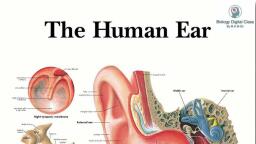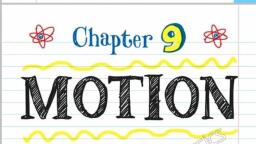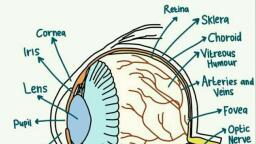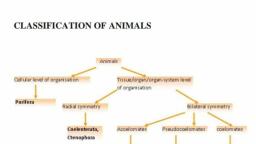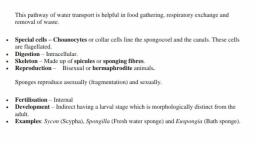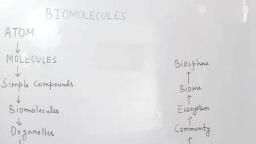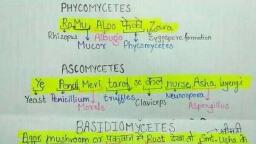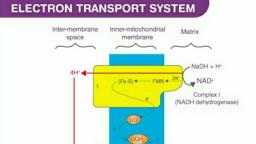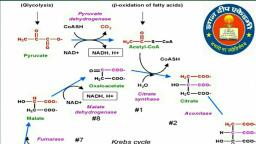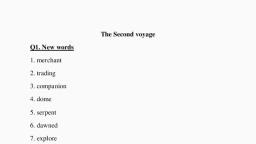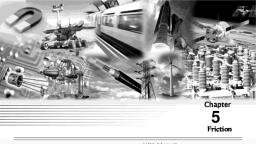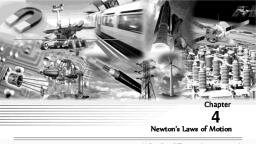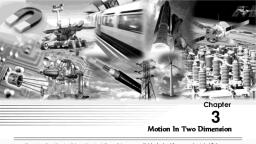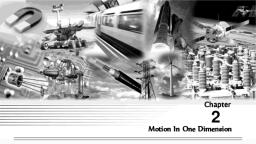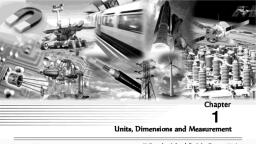Question 1 :
If $0.01$ mole of solute is present in $500\ ml $ of solution, its molarity is:
Question 5 :
The number of moles of water in 488 g <img style='object-fit:contain' src="https://storage.googleapis.com/teachmint/question_assets/NEET/5ea7fdb5a3d2442ab829353d"> are:
Question 6 :
A 1.50 g sample of an ore containing silver was dissolved,and all the $ Ag^{+} $ was converted to 0.125 g $ Ag_{2}S $. What was the percentage of silver in the ore?
Question 7 :
The formula which represents the simple ratio of atoms in a compound is called:
Question 8 :
Semimolar solution contains how many moles of solute in 1L of solution?
Question 9 :
Approximate atomic weight of an element is 26.89 . If its equivalent weight is 8.9 , the exact atomic weight of element would be :- -
Question 10 :
0.52 g of dibasic acid required 100 mL of 0.1 <img style='object-fit:contain' src="https://storage.googleapis.com/teachmint/question_assets/NEET/5ea7fccdfdd8313cc8726705"> NaOH for complete neutralization. The equivalent weight of acid is:
Question 11 :
The molarity of a solution is 0.2 M when 18 g of glucose is dissolved in 500 ml of water.
Question 12 :
If true enter $1$, else enter $0$.<br/>A decinormal solution is $\dfrac{1}{10}\ N$.
Question 13 :
How many moles of sulfate ions are in $200 mL$ of a $2 M$ sodium sulfate solution?
Question 14 :
The ratio of mole fraction of a solute and a solvent in a binary solution is:
Question 15 :
The weight, in grams, of KCl (Mol.wt. = 74.5) in 100ml of a 0.1M KCl solution is:
Question 16 :
The number of moles of solute present in 2.0 litre of 0.5 M NaOH solution is:
Question 17 :
Stoichiometric ratio of sodium dihydrogen orthophosphate and sodium hydrogen orthophosphate required for synthesis of <img style='object-fit:contain' src="https://storage.googleapis.com/teachmint/question_assets/NEET/5ea7fed1a3d2442ab82937d8"> is
Question 19 :
The least count of an instrument is 0.01 cm. Taking all precautions, the most possible error in the measurement can be
Question 20 :
<b></b>Calculate the volume in 10 millimoles of solute present in 0.08 M solution.
Question 21 :
A solution contains 1 mole of water and 4 moles of ethanol. The mole fraction of water and ethanol will be:
Question 22 :
A direct current of 1.25 A was passed through 200 mL of 0.25 M $Fe_{2}(SO_{4})_{3}$ solution for a period of 1.1 hour. The resulting solution in cathode chamber was analyzed by titrating against acidic $KMnO_{4}$ solution. 25 mL permaganate solution was required to reach the end point. Determine molarity of $KMnO_{4}$ solution.
Question 23 :
The volume of $HNO_3$ consumed during the reaction with brass is:
Question 24 :
A 10% solution of $HNO_3$ would be produced by dissolving 63 g $HNO_3$ in how many mL water?<br>
Question 26 :
The molarity of a NaOH solution by dissolving $4\;g$ of it on $250\;mL$ water is:
Question 28 :
The ${P}^{H}$ of a dibasic acid is $3.699$. Its molarity is?
Question 29 :
In carbon disulphide $(CS_{4})$, the mass of sulphur in combination with $3.0\ g$ of carbon is
Question 30 :
Dissolving $120\ g$ of urea in $1000\ g$ of water gave a solution of density $1.15\ g/mL$. The molarity of the solution is:
Question 31 :
In an experiment, $0.600mol$ of chlorine gas, ${Cl}_{2}$ is reacted with an excess of hot aqueous sodium hydroxide. One of the products is $NaCl{O}_{3}$.<br>Which mass of $NaCl{O}_{3}$ is formed?
Question 32 :
The mole fraction of benzene in a solution containing $39\%$ by mass in an organic solvent of molecular mass $122$ is :
Question 33 :
If 250 ml of 0.25 M NaCl solution is diluted with water to a volume of 500 ml, the new concentration of solution is:
Question 34 :
The total ionic strength (total molarity of all ions) containing $0.1\ M$ $CuSO_4$ and $0.1\ M$ of $Al_2(SO_4)_3$ is:
Question 35 :
A solution is prepared by dissolving 9.8 g of $H_2SO_4$ in 54 g of water. What is the mole fraction of $H_2SO_4$ ?
Question 36 :
$35.4\ mL$ of $HCl$ is required for the neutralization of a solution containing $0.275\ g$ sodium hydroxide. The molarity of hydrochloric acid is:
Question 37 :
An aqueous solution contains 0.53g of anhydrous ${ { Na }_{ 2 }CO }_{ 3 }$ (Mol. wt. 106) dissolved in 100ml of solution. The molarity of the solution is:
Question 38 :
$\displaystyle 2N$ $\displaystyle HCl$ solution will have same molar concentration as a:
Question 39 :
The molarity of a solution obtained by mixing 750 $mL$ of $0.5M \ HCl$ with 250 $mL$ of $2M\ HCl$ will be :<br/>
Question 40 :
A mixture of ethanol and water contains $54\%$ water by mass. Calculate the mole fraction of ethanol in this solution.
Question 41 :
Normality of 1% ${ H }_{ 2 }{ SO }_{ 4 }$ solution is nearly:<br>
Question 42 :
What is the weight by volume percentage of $3N \ {H }_{ 2 }{ SO }_{ 4 }$ solution?
Question 43 :
Assertion: Greater the mole fraction of a gas in gaseous mixture, greater is the pressure it exerts.
Reason: Pressure of gas is due to bombardment of gas molecules on the walls of the container.
Question 44 :
If 98 grams of $\displaystyle { H }_{ 2 }{ SO }_{ 4 }$ is added in sufficient water to make 500 milliliters of solution, then what is the molarity of a solution?
Question 45 :
 $4.0 g$  of  $NaOH$  is dissolved in  $100\mathrm { cc }$  of solution. The normality of the solution is:
Question 47 :
The molarity of a solution obtained by mixing $250\ ml$ of $0.5M\ HCl$ with $750\ ml$ of $2M\ HCl$ is:
Question 48 :
A gas mixture of $3$ liters of propane and butane on complete combustion at $25^{o}C$ produced $10$ liters of $CO_{2}$ initial composition of the propane & butane in the gas mixture is:<br/>
Question 49 :
When the concentration is expressed as the number of moles of a solute of a square per litre of solution is known as:-
Question 51 :
$300$ g of an aqueous solution of a particular solute (containing $30$% solute by mass) is mixed with $400$ g of another aqueous solution of the same solute (containing $40$% solute by mass). In the final solution, mass $\%$ of solute is :<div>[Given, Molecular mass of solute $\displaystyle = 50$]<br/></div>
Question 52 :
A mixture of $Na_2C_2O_4$ ($A$) and $KH_2C_2O_4.2H_2O$ ($B$) required equal volumes of $0.1$ M $KMnO_4$ and $0.1$ M $NaOH$ separately. Molar ratio of $A$ and $B$ in the mixture is :
Question 53 :
A candle is burnt in a beaker until it extinguishes itself. A sample of gaseous mixture in the beaker contains $6.08\times 10^{20}$ molecules of $N_2, 0.76\times 10^{20}$ molecules of $O_2$, and $0.50\times 10^{20}$ molecules of $CO_2$. The total pressure is 734 mm of Hg. The partial pressure of $O_2$ would be:
Question 55 :
Potassium permanganate acts as an oxidising agent in acidic, alkaline as well as neutral media. Which among the following statements is incorrect?
Question 56 :
In an ideal mixture of liquid A and B the mole fraction of A is 0.25 . If the ratio of $ P^0_A $ to $ P^0_B $ is 7/3. how many repeated distillations would be required as a minimum to obtain a small quantity of distillate which has a mole fraction of A , better than 0.80 ?
Question 57 :
What is the normality of 0.3 M $ H_3PO_4 $ when it undergoes the reaction?<div><br/><div>$ H_3PO_4 +20H^- \rightarrow HPO^{2-}_3 +2H_2O $</div></div>
Question 58 :
If 25 mL of a $H_2SO_4$ solution reacts completely with 1.06 g of pure $Na_2CO_3$, what is the normality of this acid solution?
Question 59 :
A $15$ mL sample of $0.20\ M\ MgCl_2$ is added to $45$ mL of $0.40\ M\ AlCl_3$, what is the molarity of $Cl^{-}$ions in the final solution?
Question 60 :
Consider the following solutions,<div><br/>(a) $4$ g of caustic soda is dissolved in $200$ mL of the solution.<br/>(b) $5.3$ g of anhydrous sodium carbonate is dissolved in $100$ mL of solution.<br/>(c) $0.365$ g of pure HCl gas is dissolved in $50$ mL of solution.</div><div><br/>The molarity of these solutions respectively are :<br/></div>
Question 61 :
What $\%$ of the carbon in the $H_2CO_3-HCO^-_3$ buffer should be in the form of $HCO^-_3$ so as to have a neutral solution? $(K_a=4\times 10^{-7})$
Question 62 :
Gaseous ${N}_{2}{O}_{4}$ dissociates into gaseous ${NO}_{2}$ according to the reaction ${N}_{2}{O}_{4}(g)\rightleftharpoons 2{NO}_{2}(g)$. At $300K$ and $1atm$ pressure, the degree of dissociation of ${N}_{2}{O}_{4}$ is $0.2$. If one mole of ${N}_{2}{O}_{4}$ gas is contained in a vessel, then the density of the equilibrium mixture is:
Question 66 :
The molarity of solution and weight of sodium bromate necessary to prepare $85.5$ mL of $0.672\: N$ solution when the half-cell reaction is $BrO^{\circleddash}_3 + 6H^{\bigoplus}+ 6e^-\rightarrow Br^{\circleddash} + 3H_2O$, are respectively :
Question 67 :
An aqueous solution of concentrated hydrobromic acid contains $48\%$ $HBr$ by mass. If the density of the solution is $1.50$ g/mL, what is its concentration?<br>
Question 68 :
$1$ mole $N_{2}$ and $4$ mole $H_{2}$ are allowed to react in a vessel and after reaction $H_{2}O$ is added to the vessel. Aqueous solution required $1$ mole $HCl$. Mole fraction of $H_{2}$ in the gaseous mixture after the reaction is:
Question 69 :
Sulphuric acid reacts with sodium hydroxide as follows <br/>$H_2SO_4$ + $2NaOH$ $\rightarrow$ $Na_2SO_4$+ $2H_2O $<br/>When 1 L of 0.1 M sulphuric acid solution is allowed to react with 1 L of 0.1 M sodium hydroxide solution, the amount of sodium sulphate formed and its molarity in the solution obtained is ?
Question 70 :
$500$ g of urea solution of mole fraction $0.2$ is diluted to $1500$ g. The mole fraction of solute in the diluted solution is:
Question 71 :
<u></u>If $500mL$ of a $5M$ solution is diluted to $1500mL$, the molarity of the dilute solution is:
Question 72 :
A 3.4 g sample of H$_2$O$_2$ solution containing $x\%$ H$_2$O$_2$ by mass requires x ml of a KMnO$_4$ solution for complete oxidation under acidic condition. The molarity of KMnO$_4$ solution is :
Question 73 :
What is the mole fraction of the solute in a $1.00$ m aqueous solution?
Question 74 :
A solution of $KMnO_4$ containing $3$ g/L is titrated with a solution of $H_2O_2$ containing $2$ g/L.<div>The volume (in ml) of $KMnO_4$ required to react with $20$ mL $H_2O_2$ solution is: (as nearest integer) </div>
Question 75 :
To a 25 ml $ H_{2}O_{2}$ solution, excess of acidified solution of potassium iodide was added. The iodine liberated required 20 ml of $ 0.3 N \ Na_{2}S_{2}O_{3}$ solution. The volume strength of $ H_{2}O_{2}$ solution is:

